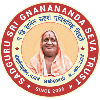Personal Computer Organization
Course Objectives
While studying the Personal Computer Organization, the student shall be able to:
- Explains the computer configuration and detail about the Motherboard
- List the external peripherals, busses and ports
- Describes the working and functions of keyboard, mouse, display device
- Elaborates about the construction and working of the various types of printers
Course Outcomes
After completion of the Course Personal Computer Organization, the student will be able to:
- Define the plugs, connectors and ports
- Elaborate the installation procedure of Motherboard
- List the Key board layout, mouse applications
- Describe the working of advanced level printers
Block- 1: Motherboard, Buses, Ports and Memory of a PC
Unit-1 – Motherboard
Mother Board -Components and Functions-Data Exchange in the Motherboard – Plugs, Connectors and Ports- Bootstrapping using the BIOS – Installing Peripherals- Single Board Computer- Block diagram of Motherboard – Installation of Computer System -Motherboard Installation and Upgrade Guide
Unit-2: Standard External Connectors, Buses and Ports
Standard External Connectors -How to Upgrade and Install a New Hard Drive How to Partition and Format a New Hard Drive- How to Install New Memory Modules- Installation Upgrade Guide for CD/DVD/CDRW Drives – Network Interface Card (NIC) Installation Guide – Fax/Modem Installation Guidelines – Different type of Buses- USB Hubs
Unit-3: Memory
Floppy Disk Drive Construction and Operation- Formatted and Unformatted Capacity – Floppy Disk Interfacing and Configuration- Hard Disk Drives – Construction and Operation of the Hard Disk- Hard Disk Operational Overview – Hard Disk Connectors and Jumpers – Hard Disk Logic Board – Sense, Amplification and Conversion Circuits- Hard Disk Cache and Cache Circuitry – External Hard Disks- Removable Hard Disk Trays
Block- 2: External Peripherals of a PC
Unit-4: Keyboard
Keyboards -General Layout Issues -Standard Keyboard Layouts -Non-Standard Keyboard Layouts -Programmable Keyboards -Notebook Keyboards -Special Keyboard Features and Accessories – Integrated Peripherals -DOS Keyboard Controls -Accessibility Features (Sticky Keys, Filter Keys and Toggle Keys) -BIOS Settings
Unit-5: Mouse
Mechanical Mice – Mechanical or Opto-Mechanical – Connectivity and Communication Protocols – Common Mouse Operations – Applications Programming Interface – Graphics Tablet (DIGITIZER) – History and Background – Operation- Uses
Block -3: Display Devices
Unit-6: CRT Display Devices
Monitors- Block Diagram of a Monitor – The Cathode Ray Tube (CRT) – Interface and Cabling – CRT Characteristics – Magnetization and Degaussing – Monitor Power and Safety – Frame Buffer Memory Requirements – Difference between TV and computer monitor – Resolution: A Key Problem in Imaging
Unit-7: Advanced Displays
Analog Verses Digital Interfaces- Liquid Crystal Displays- Video Adapter- Video Display Standards – Monochrome Display Adapter (MDA) – Super VGA (SVGA) and Other Standards Beyond VGA- 3D Video Acceleration- Video Card Performance- The Importance of Drivers
Block- 4: Printers and Its Working
Unit-8: Printers
Computer Printer – Printing Technology – Modern Print Technology – Obsolete and Special-Purpose Printing Technologies – Other Printers -Printing Mode-Monochrome, Colour and Photo Printers- Forensic Identification – Dot Matrix Printer – History of Printing
Unit-9: Advanced level Printers
Inkjet Inks – Inkjet Head Design – Cleaning Mechanisms- Third-Party Ink and Cartridges – Underlying Business Model – Laser Printers – Colour Lasers- How it Works – Laser Printer Maintenance – Stenographic Anti-Counterfeiting (“Secret”) Marks – Safety Hazards, Health Risks and Precautions- Centronics Interface – Signals from PC to Printer and Printer to PC- How to Connect a Printer to a Computer
Computer Hardware Servicing
Course Objectives
While studying Computer Hardware Servicing, the student shall be able to:
- Describe the brief history of the Computer and its generations of growth
- Explain the various components of the Hardware in the system
- Deal with BIOS/ CMOS Management
- Detail about the installation of Motherboard, Printer
Course Outcomes
After completion of the Course Computer Hardware Servicing, the student will be able to:
- Draw the block diagram of a modern computer
- Identify the components of the Hardware
- Perform the installation of the Motherboard and Printer
- Conduct a self-test on the system for its running condition
Block -1: PC Hardware and Its Components
Unit-1 – Overview of PC Hardware
Brief History or Computers – PC through Pentium – Evolution of the Pentium – 4 – Athlon – Athlon XP versus Pentium-4- Opteron / Athlon-64 – A Complete Line of Chips – Historical Overview – Computer Block Diagram – PC Schematic
Unit-2: Components of Hardware
Motherboard and Daughterboard- SMPS (Switched-Mode Power Supply)- Visual Display Unit- Keyboards- Mother Board- Intel 80286/80386/80486 Microprocessor Family- Intel Pentium Microprocessor Family – Motherboard Memory – BUS System Architecture
Block -2: BIOS Management and Its Components
Unit -3: BIOS/ CMOS Management
How BIOS Works – Booting the Computer – Updating Your BIOS – FLASH the BIOS – the process – Function of BIOS- BIOS Feature “Magic Dates” – BIOS Power-On Self Test (POST) -BIOS Start-up Screen- System Configuration Summary
Unit -4: Components of BIOS
BIOS Components and Features- Extended System Configuration Data (ESCD)- BIOS Settings – Accessing CMOS Setup- Virus Protection/Virus Warning – Boot Sequence – Troubleshooting system faults using POST – BIOS Settings – Integrated Peripherals- BIOS Settings – Exit Setup – BIOS and POST codes – Troubleshoot video card- Sound Card and Speaker Troubleshooting
Block-3: Installations of Motherboard and Connecting the Peripherals
Unit -5: Motherboard Installation
Motherboard Comments and Function- Identification or Component Functions- Motherboard Configuring – Configuring a Board Which Uses Jumpers – Motherboard and Case Connection Procedure- External Peripheral Connection Procedure- Install the Motherboard – All-in-one Motherboards
Unit -6: Connecting peripherals and Memory
Identifying the Connectors and Cables- I/O Cables / Connectors – Motherboard Power Connectors- Add Memory Modules to Your Computer -Adding Computer Memory – Steps to Upgrade a CPU – BIOS setup program- Power on Self Test
Block-4: Printer Installation and PC Servicing
Unit -7: Printer Installation
Introduction to Dot-Matrix Printer – Near Letter Quality (NLD)- Dot Matrix (Impact) Printer Mechanisms – General Trouble Shooting tips- Self Test- Printer Installation – Laser Printer- Principles of Operation- Laser Printer- Interface Controller- Inkjet Printer – Impact vs. Non-impact- Inside an Inkjet Printer
Unit -8: Advance PC Servicing
Trouble Shooting – Tips- Driver Dilemmas – Common Troubleshooting Techniques and Strategies – Maintenance Troubleshooting and Methodology- Power Circuit Troubleshooting – LCD Panel Troubleshooting- Peripheral Troubleshooting – Other Function Troubleshooting – Touch Screen Troubleshooting – Determining Common Causes of Failures- Isolating Hardware Problems
Trouble Shooting And Data Recovery
Course Objectives
While studying Trouble Shooting And Data Recovery, the student shall be able to:
- Identify the error and the cause for the error
- Describe the essentials of DOS
- Perform Hard Disk management and configuration
- Explain the procedure of Software Installation
Course Outcomes
After completion of the Course Trouble Shooting And Data Recovery, the student will be able to:
- List the errors and trouble shoot the same
- Prepare the hard Disk management and configure the same
- Perform the software installation including the installation of anti-virus software
- Explain the Windows File System
Block -1: Errors and DOS Essentials
Unit-1 – Errors
Common Windows errors -DLL Errors – Stop Errors – Vxd Errors- ActiveX Errors – Desktop Operating Systems – Microsoft Windows 2000 Price – Sun Microsystems – Solaris 3 – Various – Linux review – Network Operating Systems – Overview of Windows Operating
Unit-2: DOS Essentials
Windows Desktop Timeline – Windows Server Products History – Windows Configuration Files – An Overview of MS DOS – Working with the Files -DOS system files – DOS interface (CLI) – DOS Error Message HW124
Block -2:File System and Hard Disk Management
Unit-3: Windows File System
Understanding the FAT File Systems – FAT12- The FAT16 File System- The FAT32 File System – NTFS4 – NTFS5 – HPFS – How to Fix Hard Drive Errors- Testing For Drive Errors and Health with Check Disk- Microsoft Windows File Systems
Unit-4: Hard Disk Management
Hard Disk – Hard Disk Drive Configuration and Installation – Preparing your hard drive for Mac OS – Reassigning Drive Letters – Volume – Formatting a Hard Disk Drive – Format Hard Drive
Block- 3: Hard Disk Configuration and OS Installation
Unit-5: Hard Disk Configuration
Using Debug to Remove a Non-DOS Partition – Partition Table and Boot Sector repair with Byte Back D.RIS. – Disk Analysis- Fixboot – Partition recovery – Fixing Bad Sectors on Hard Disk- Solution to Bad Sector Problem-Low-level formatting (LLF) of hard disks- Transition away from LLF
Unit-6: Operating System Installations, Upgrades Hardware Device Driver Installation
System requirements for Windows XP operating Systems- Common Errors during Windows Vista Activation – Minimum Hardware Requirements to Install Windows 93- Microsoft’s Windows 93 SE-CD Install on Blank Hard Drive – Upgrading Win98 – Device Driver – How to create and entrust a ZIP File in Windows MEJXP/2003- A hardware driver – A Network Interface Card U
Block -4:Software Installations
Unit-7: Introduction to Software Installation
Software Compatibility- Internet Explorer 7- ZIP Utilities- Hardware Requirements- How to Install Office from a Network Server – How to Install Office from a Custom CD-ROM – How to Include Office on a Hard Disk Image – Create Multiple Hard Disk Images
Unit-8: Installation of MS Office and Anti Virus
Silent Installation – Installing MS Office 97 -Installing MS Office 2000 Professional for Windows 98/2000/XP – Installation Guide for Service Release la (Sr-la) – Installing Anti- Virus- Installing and Playing Network Capable Games- Uninstalling Windows software- How to change or remove a program in Windows XP- Virus Management
Block -5:Data Recovery
Unit-9: Data and File Recovery
Hard Disk Basics- Storing the Data- Understanding Tracks, Sectors, Cylinders- Scan Disk Error levels- Surviving Data Disasters – Creating Emergency Rescue Disk- Recovery Software – Restoring Files from a Backup- Partitioning the Hard Drive using FDISK – Repairing a Macintosh Diskette- Recovering Files from a Macintosh Diskette – Desperate Measures — Directory Errors and Physical D – Common Types of Data Loss – Disk Defragmenter Utility
Unit-10: Windows Registry and Disk Image/ Cloning
What is the Registry- The Structure of the Registry – Importing and Exporting Registry Settings- Maintaining the Registry – Preventing registry backup failures – Solving Registry entry conflicts – Field of the invention- Disk Cloning -Issues to consider before cloning a drive-How to prepare for disk cloning- System Disk Cloning- Disk Cloning Using GHOST – Disk Cloning Software
Hardware and Network Lab
Hardware
- Intro, passive elements, transistors, gates
- Boolean algebra and combinational logic
- Logic minimization Lab
- Programmable and steering logic
- Arithmetic Lab
- Sequential logic design
- Design of Finite State Machines (FSMs)
- Sequential Circuits
- Memory and bussing

